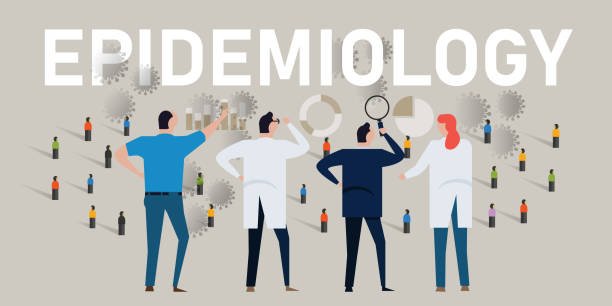How Health Surveys Contribute to Understanding Community Health:
Health surveys are crucial instruments for comprehending and improving community health, offering insights that inform decision-making and policy development. Their contributions include:
- Identifying Health Trends and Risk Factors Health surveys provide specific information about epidemiological situations, health trends, and common health behaviors such as tobacco use, alcohol consumption, poor diet, and lack of physical exercise. This allows healthcare professionals to locate risk factors within a community [1][3].
- Informing Health Planning and Policy The data collected is essential for planning, monitoring, and evaluating health programs and crafting effective health plans. They reveal significant health issues and guide public health strategies, helping policymakers understand the population’s preferences and priorities, and allocate resources effectively [1][3].
- Assessing Healthcare Service Quality and Patient Experience Surveys gather feedback on patient experiences, satisfaction with care, and the quality of services provided by healthcare facilities and professionals. This helps identify operational inefficiencies, improve patient care, boost satisfaction, and understand patient perspectives on the care they receive [2][4].
- Monitoring and Evaluating Programs Health surveys help evaluate the effectiveness of health programs and interventions by tracking changes in health indicators and behaviors over time. They can identify emerging health issues and problems within the healthcare system, leading to improved health outcomes [5][6].
- Addressing Health Disparities Community health assessments, a type of health survey, provide comprehensive information about the health needs, critical issues, and resources of a specific community. They are vital for identifying and addressing health inequalities, particularly among vulnerable populations, and for prioritizing resources [7].
- Supporting Evidence-Based Decisions By providing quantifiable data, health surveys enable policymakers and hospital administrators to make evidence-based decisions that enhance the efficiency and effectiveness of healthcare systems. They help in benchmarking patient satisfaction, streamlining patient intake, and even performing market research for healthcare services [2][4].
- Understanding Behavioral Determinants Surveys help identify behavioral determinants of health, such as lifestyle choices linked to chronic diseases. This enables healthcare providers to tailor treatment plans and support patients more effectively [6].
Types of Health Surveys:
Health surveys come in various forms, each designed to gather specific types of information:
- Population Surveys: These collect health and social science information from a sample of people to understand a larger population, such as the National Health Interview Survey (NHIS) and the National Health and Nutrition Examination Survey (NHANES) [8].
- Provider Surveys: These focus on healthcare providers, gathering data on patient demographics, diagnoses, and how medical centers operate, like the National Ambulatory Medical Care Survey (NAMCS) [8].
- Patient Satisfaction Surveys: Used to gauge patients’ opinions on the quality of care, staff, and facilities [4][9].
- Patient Safety and Accreditation Surveys: Used to ensure compliance with regulatory standards and track patient safety culture [4].
- Healthcare Employee Engagement Surveys: Monitor engagement rates among healthcare staff to identify opportunities for enhancing the employee experience [4].
- Health Risk Assessment (HRA) Surveys: Help identify individual health risks and personalize care plans [9][10].
- Patient Follow-up and Post-Discharge Surveys: Used to monitor patient progress after a visit or hospital stay and prevent readmissions [9][10].
- Medication Adherence Surveys: Assess if patients are taking prescribed medications correctly and identify challenges [10].
- Community Health Needs Assessment Surveys: Evaluate the physical, mental, and social well-being of a specific demographic or geographic group, examining both needs and available resources [7].
- Patient-Reported Outcome Measures (PROMs): Focus on patients’ perspectives of their health status and the impact of care [11].
- Surveys on Social Determinants of Health (SDoH): Explore how social and economic factors influence health outcomes [11].
Methods of Conducting Health Surveys:
Surveys can be conducted using various methods, including questionnaires and in-depth interviews via phone, mail, email, and in-person. Online platforms are increasingly used for efficient data collection from diverse populations [8][9].
Challenges in Conducting Health Surveys:
Despite their benefits, health surveys face several challenges:
- Data Quality and Reliability: Issues can arise from biased sampling, poorly worded questions, respondent biases (e.g., recall bias, underreporting sensitive behaviors), and errors in data entry [8][12].
- Response Rates and Representation: Achieving high response rates can be difficult, and certain populations may be excluded due to lack of access to survey mediums (e.g., homeless, those without internet or phones) [8][13].
- Methodological and Logistical Hurdles: Surveys can be costly and time-consuming, especially for in-person interviews or collecting biological samples. Identifying and reaching appropriate respondents can also be challenging, particularly for specific professional groups [13][14].
- Question Design: Questions must be clear, understandable, relevant, and avoid leading respondents. Ambiguous or overly long questions can lead to survey fatigue and inaccurate data [8][12].
- Cultural and Linguistic Barriers: In diverse populations, overcoming linguistic and cultural differences requires significant time and resources, which can affect participation and data accuracy [15].
- Data Standardization: Lack of standardization across different health departments can make it difficult to compare data effectively [13].



